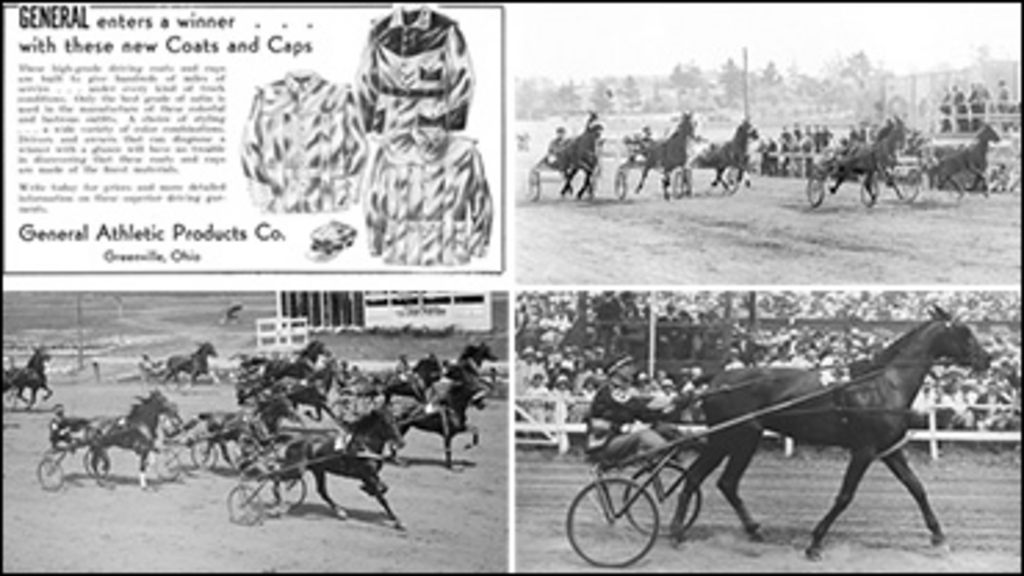
In this week's Rewind Robert Smith takes readers back to the decade of the 1930's and displays a number of vintage photographs that help to portray the times as part of the regular monthly feature Years Ago. Harness racing was under extreme stress for much of the decade due to tough economic conditions but enough people cared about preserving the sport that it survived.
1930's - Racing in Nova Scotia
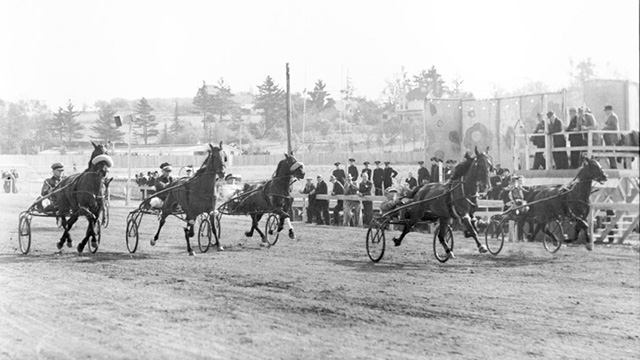
Racing at Bridgewater, N.S. during the 1930's. This photo shows the start of a race at this popular track that was started by a well-known townsman named Heber Sweeney (Photo courtesy of Paul and Corey Harmon, descendants of Mr. Sweeney)
Reportedly one of the more popular racing spots in the Maritimes during the 1930's was Bridgewater Park, located at Bridgewater, Nova Scotia. An enterprising gentleman by the name of Heber Sweeney had a lot to do with not only the success of the track but also the popularity of harness racing in the region. Mr. Sweeney, a well-known local sportsman, one-time mayor and funeral home operator established the once popular track. It remained as a stop on the local circuit until the 1950's.
Horses trained and driven by the Bridgewater sportsman fared well further abroad as well. After competing successfully on local ovals, one of his star performers named John Dean later set a track record at Toronto's Dufferin Park while racing for Sarnia horseman Marshall Moore, who purchased him from Mr. Sweeney.
1930 - First Hanover Bred Takes Hambletonian's Top Prize
The fifth edition of the famous Hambletonian was held in 1930 at Good Time Park in Goshen, N.Y. for the first time. While its purse of $54,009.84 was well off the record set in the 1926 inaugural, it would become the highest of the decade of the 1930's as the Great Depression gripped the world. That year's Hambo would become historic for a number of reasons, perhaps most importantly because it marked the first ever win by a "Hanover" entrant, a breed that would later dominate. When Lawrence Sheppard purchased the famed Hanover Shoe Farm, part of the broodmare band included Miss Bertha Dillon, the dam of Hanovers Bertha. Under the capable guidance of Thomas Berry as trainer and driver, she dominated the colt trotting ranks at both two and three, winning both the Kentucky Futurity and Hambletonian at three in 1930.
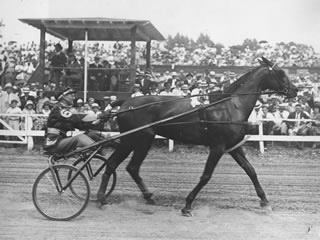
Hanovers Bertha (Photo courtesy of Hambletonian Society Archives)
The 1930 Hambletonian exposed one of the then great "flaws" of the sport of harness racing. With a very poor starting system called "open scoring" that had been in place for many decades, it sometimes took literally forever to get a race underway. Drivers would intentionally use tactics to delay the start of a race usually to upset certain horses in an attempt to gain an advantage.
An excerpt from the account of that year's race found in the Hambletonian Society's archives states:
"The race went three heats for the first time. The infamous start of the second heat was delayed 43 minutes with 26 recalls, as drivers employed a common tactic of the day, purposely scoring ahead of the "pole horse" (post position #1) to intentionally cause a recall and unsettle the other trotters, or get the advantage on the field at the start. Because of the delay, the Columbia Broadcasting Company could only do the second heat on their radio broadcast and were off the air by the time the horses came out for the third and final heat."
1932 - Rockingham Park Draws Huge Crowds
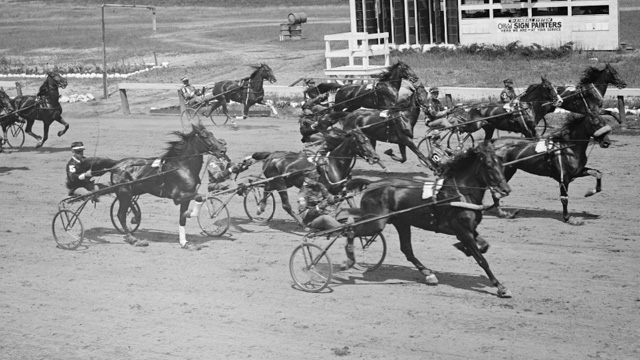
A photo of racing at rockingham Park (Leslie Jones collection)
One of the most successful racetracks in all of the U.S. during the 1930's was Rockingham Park located at Salem, New Hampshire. Shown above is the start of the 2:10 Trot in August 1932. This track hosted both breeds and drew tremendous crowds.
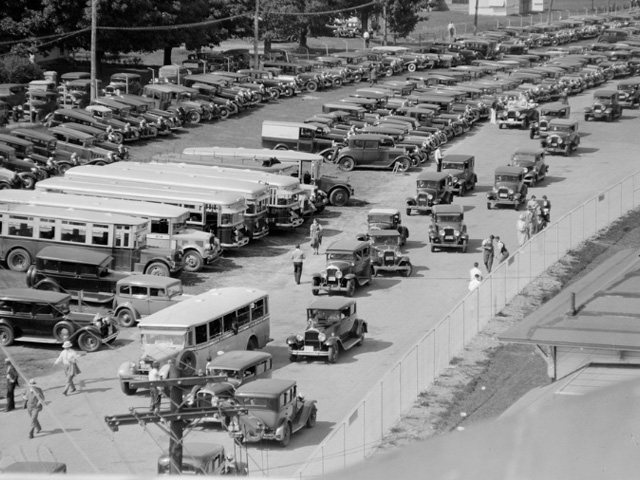
A large crowd gathers at Rockingham Park (Leslie Jones Collection)
1938 - Top Quality Racing Silks Available
In the earlier days of harness racing the silks worn by many of the drivers were fashioned by local people, often family members or relatives who happened to be skilled in sewing. As time went on commercially-manufactured driving suits came into vogue. Companies that provided custom-made jackets and caps often advertised in racing journals and horsemen ordered their requirements via mail order.
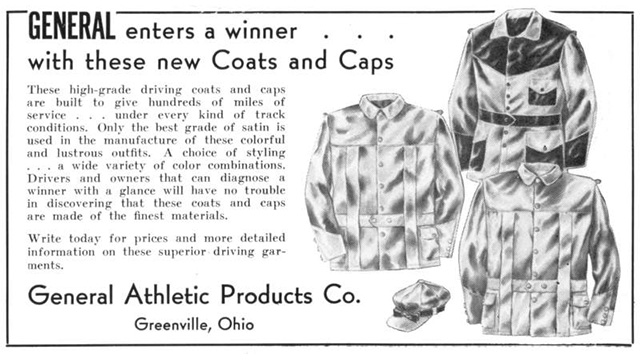
Photo from Hoof Beats
1939 - Tote Boards On The Move
Racing at this time in history was held at facilities that were very basic and lacked any so called "frills" of any kind. P.A. systems were often ineffective and scorecards as programs were called lacked all but the most basic information. One amenity that was for the most part non-existent was a Tote Board, except for certain areas such the New England circuit. The people responsible for putting on races came up with an ingenious idea of moving a fairly elaborate board from one location to another. Since racing usually moved from one town to another the mobile board became part of the new era of harness racing.

Happy L, driven by Canadian-born driver Earle Avery of Woodstock, N.B., reaches the wire a winner at Bass Park in Bangor, Maine. In the background can be seen a fairly elaborate tote board that even included a clock. This board made its way from one trotting park to another in an effort to better inform racing fans in attendance. (Photo from Guy Kendall collection)
Who Is It?
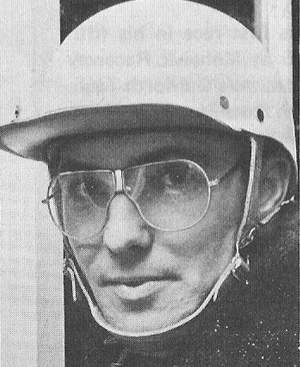
Can you identify the young fellow shown above? I believe he is still quite active in the sport.
Where Was It?
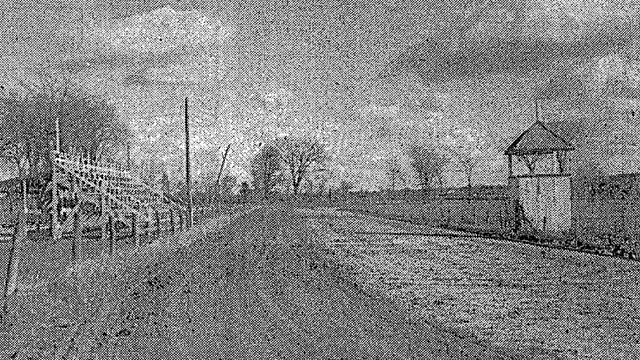
Can you name the location of this once-popular small-town track located in Ontario? My apologies for the photo quality but at least there is one available.
Quote For The Week:
"A man wrapped up in himself makes an awfully small package."


This week's person photo
This week's person photo didn't seem to pose too much difficulty as several people came up with Ken Webb as the "mystery man". The shot of the old track was perhaps not quite as easy but Gord Brown was first to answer Coldwater, longtime home of the Waples stable which was correct.
A special thanks to Cass for acknowledging the historic photos and other materials. Thank you for being an enduring follower of Rewind.
Im going to guess Coldwater
Im going to guess Coldwater and Roger Mayotte
Coldwater.
Coldwater.
Bothwell fair grounds
Bothwell fair grounds
Need a Clue? This week's old
Need a Clue?
This week's old track picture is located in Ontario as stated, well north of Toronto. Annual races days were held back in the day but it was used as a training centre for countless years, mainly by one stable and a lot of good horses learned their lessons on that oval.
Ridgetown Ontario?
Ridgetown Ontario?
I'll take a guess and say New
I'll take a guess and say New Hamburg.
Maybe Ken Webb? Oshawa, old
Maybe Ken Webb? Oshawa, old Alexander Park?
Ken Webb?
Ken Webb?
Kenny Webb
Kenny Webb
Great bunch of racing history
Great bunch of racing history Robert!!! It must be hard for you to find all this old stuff?? Thanks for looking. Picture of man is maybe Ken Webb?? Picture of track looks like any old fairgrounds track in Ontario!! Which town was it?